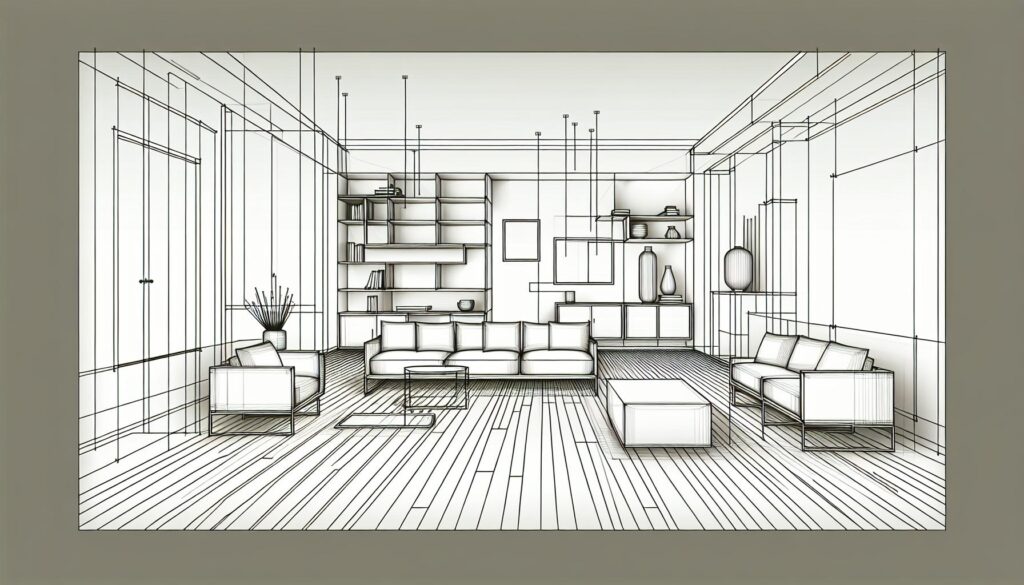When it comes to minimalist design, finding the perfect balance between functionality and style is key. As a seasoned expert in the field, I’ve discovered the art of creating spaces that are not only visually appealing but also highly practical. Striking this delicate equilibrium is what sets exceptional minimalist designs apart from the rest.
In this article, I’ll share my insights on how to achieve harmony between functionality and style in minimalist design. From selecting the right furniture pieces to optimizing space utilization, I’ll delve into the strategies that have consistently yielded stunning results in my projects. Join me as I unravel the secrets to creating minimalist spaces that are both aesthetically pleasing and incredibly functional.
Understanding Minimalist Design
When it comes to minimalist design, less is definitely more. It’s all about simplicity, clean lines, and a sense of calm. In minimalist design, every piece serves a purpose and has a strong visual impact. It’s about stripping away the excess and focusing on what truly matters.
In minimalist design, the mantra is “less is more”. This style embraces simplicity and functionality over excess and clutter. Neutral colors, simple furniture, and clean spaces are key elements. The goal is to create a space that feels open, organized, and timeless.
By understanding minimalist design principles, you can create a space that is both functional and stylish. It’s about finding the perfect balance between form and function to create a space that is visually appealing and practical.
Importance of Functionality in Design
In minimalist design, functionality plays a vital role in creating spaces that not only look good but also serve a purpose.
- Furniture must be practical, serving its intended function without unnecessary embellishments.
- Storage solutions should be integrated seamlessly to maintain the clean aesthetic of the space.
- Multi-functional pieces are highly valued to optimize space usage in minimalist design.
- Layout and flow are carefully considered to enhance the functionality of the space.
By prioritizing functionality, minimalist design ensures that every element in the space contributes to its overall purpose and usability.
Importance of Style in Design
When it comes to minimalist design, style plays a crucial role in creating a visually appealing and harmonious space. It’s not just about functionality, but also about aesthetics that enhance the overall look and feel of the room.
Incorporating elements of style such as clean lines, subtle colors, and minimalist decor can elevate the design to a whole new level. The key is to balance these stylish aspects with the functional elements to create a space that not only looks good but also works well.
Minimalist design often focuses on simplicity and elegance, using a less-is-more approach to create a modern and sophisticated look. By streamlining the design and reducing clutter, the style of the space can shine through, creating a calm and tranquil environment.
I find that incorporating personal touches and unique elements in a minimalist design can add character and warmth to the space. Whether it’s through artwork, textures, or accent pieces, infusing style into the design can make the space inviting and engaging.
Strategies for Balancing Functionality and Style
In minimalist design, functionality and style go hand in hand, creating spaces that are not only visually appealing but also practical. Here are a few strategies I use to achieve this balance:
- Multifunctional Furniture: Opt for pieces that serve dual purposes, such as a sofa bed or a coffee table with storage compartments.
- Hidden Storage Solutions: Maximize space and minimize clutter by integrating hidden storage options like built-in cabinets or shelves.
- Neutral Color Palette: Stick to a neutral color scheme for walls and furniture to create a sense of cohesiveness and calmness in the room.
- Focus on Quality: Invest in high-quality pieces that are not only aesthetically pleasing but also durable and long-lasting.
- Declutter Regularly: Keep the space tidy and organized by removing items that are not essential to the design or function of the room.
- Efficient Lighting: Use natural and ambient lighting to enhance the minimalist design while ensuring functionality and practicality in the space.
By implementing these strategies, I find that I can achieve a perfect balance between functionality and style in minimalist design.
Achieving Harmony in Minimalist Design
When it comes to minimalist design, achieving harmony between functionality and style is the ultimate goal. Harmony in this context means creating a space that not only looks visually appealing but also serves its purpose effectively.
In my experience, one of the key ways to achieve harmony in minimalist design is by focusing on essential elements. By carefully selecting the furniture, decor, and accessories in a space, you can ensure that each item serves a specific function while contributing to the overall aesthetic.
Additionally, maintaining a clutter-free environment is crucial for achieving harmony in minimalist design. Clutter not only disrupts the visual flow of a space but also hinders its functionality. Implementing hidden storage solutions and regularly decluttering can help maintain a sense of order and balance in a minimalist space.
Another important aspect of achieving harmony in minimalist design is attention to detail. Every element in a minimalist space, whether it’s a piece of furniture or a decorative object, should be carefully chosen to contribute to the overall design scheme.
By opting for a neutral color palette and incorporating high-quality, timeless pieces, you can ensure that your space maintains a sense of harmony and sophistication. Paying attention to efficient lighting is also essential in creating a well-balanced and functional minimalist design.
Achieving harmony in minimalist design is all about finding the perfect balance between functionality and style. By focusing on essential elements, maintaining a clutter-free environment, paying attention to detail, and selecting the right color palette and lighting, you can create a space that is both visually appealing and practical.
Key Takeaways
- Minimalist design emphasizes simplicity, clean lines, and functionality over excess and clutter.
- Functionality is essential in minimalist design, focusing on practical furniture, seamless storage solutions, and optimized space usage.
- Style in minimalist design involves incorporating clean lines, subtle colors, and personal touches to enhance the overall aesthetic of the space.
- Strategies for balancing functionality and style include choosing multifunctional furniture, implementing hidden storage solutions, and focusing on a neutral color palette.
- Achieving harmony in minimalist design requires careful selection of essential elements, maintaining a clutter-free environment, attention to detail, and efficient lighting.
Conclusion
Striking the right balance between functionality and style is at the core of successful minimalist design. By carefully curating essential elements, maintaining a clutter-free space, and focusing on meticulous details, one can achieve a harmonious minimalist aesthetic. Opting for furniture and decor that serve a purpose while enhancing the overall look, integrating clever storage solutions, and regular decluttering are key tactics. Emphasizing a neutral color scheme, investing in high-quality pieces, and optimizing lighting play vital roles in crafting a functional and visually pleasing minimalist space. Remember, a well-executed minimalist design not only looks good but also serves its purpose effectively.



